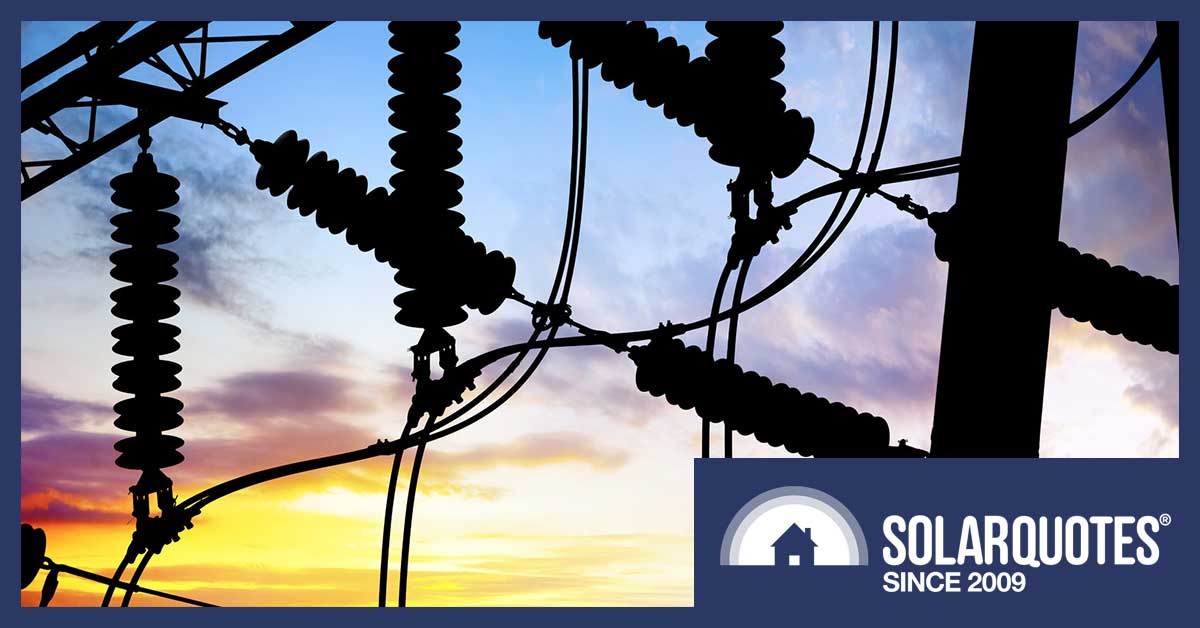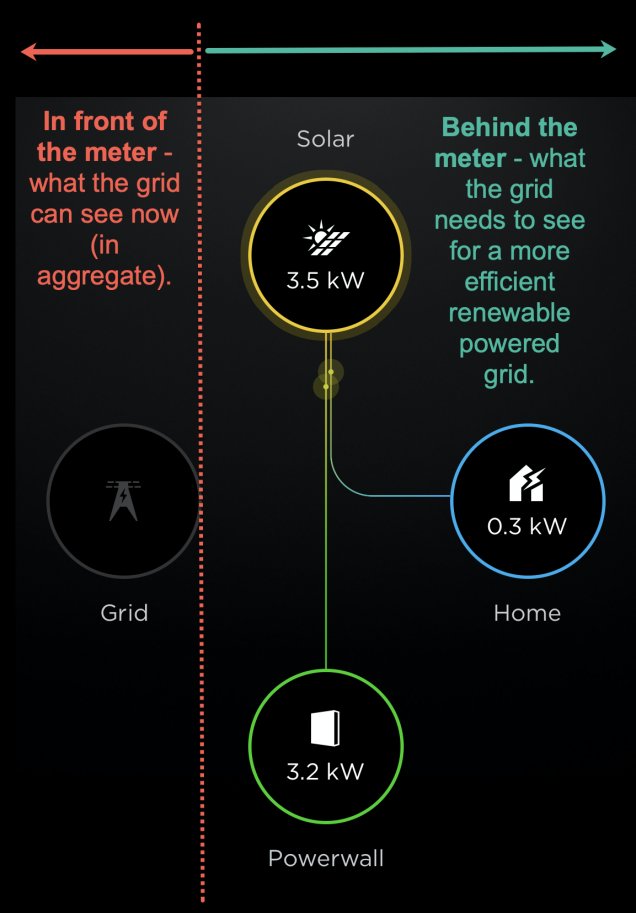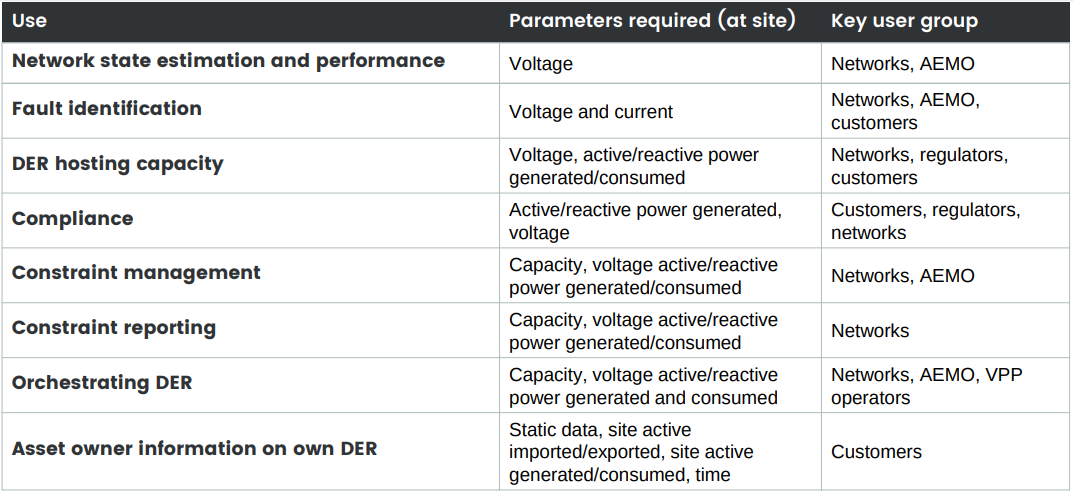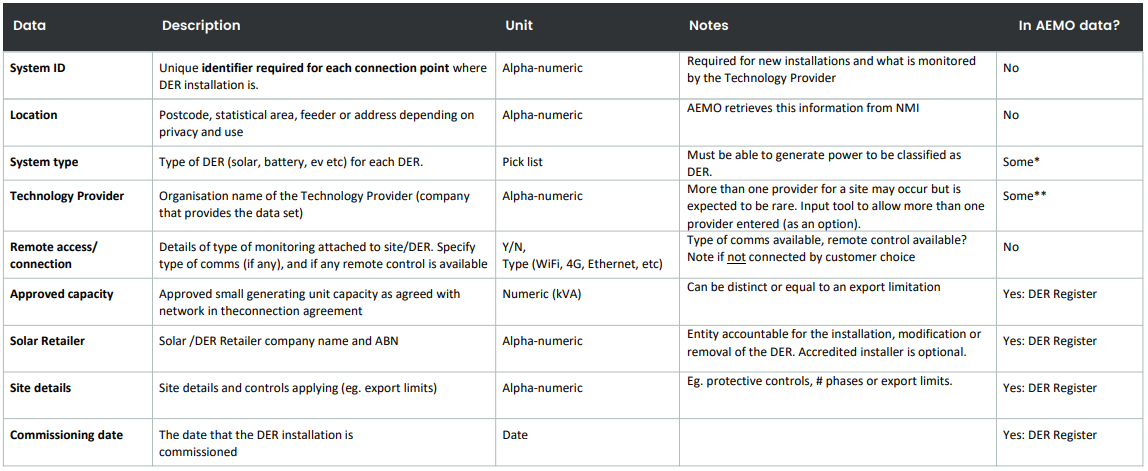
To integrate solar power into the grid more efficiently, the grid operators need to know what’s happening with your solar system. That means looking behind your meter.
With 9GW of solar PV installed, Australia’s enthusiastic embrace of household renewables is starting to bump into system capacity issues. As I wrote last week discussing the advent of the two-sided market, the time is coming where the energy sector will need to be able to reach behind the meter and manage the consumer-side resources such as rooftop generated solar electricity.
AEMO predicts that if we get it right, Australia could be generating as much as 45% of its electricity behind the meter – and to get it right, it’s clear that consumers’ supply assets (solar power, standalone batteries, and EV batteries) have to become more visible to the network.

What does ‘behind the meter’ actually mean? It means all the energy flows that happen in your house between your solar power system, battery and appliances. All the grid knows is whether you are importing or exporting to the grid. It has no idea how much solar energy you are generating, the state of your battery or even the voltage at your switchboard.
Vendors, industry associations, regulators, governments, generators and distributors, and universities have gathered to create “The Distributed Energy Resources (DER) Visibility & Monitoring Best Practice Guide” to help make what’s behind the meter more visible.
Project member and CEO of Solar Analytics Stefan Jarnason told SolarQuotes the project, which will go live at the start of May, is designed to establish what data from household PV systems is needed upstream by generators and distributors so vendors can put the telemetry into inverters.
Jarnason told us the genesis of the project was installers of quality systems were becoming frustrated at the number of low-cost, low-quality systems being installed.
“Installers want their customers to have both consumption data and system monitoring, so [customers] can see what they’re getting – and those companies last longer than people installing rubbish.”
The increasing desire from the network side to “see past the meter” created a good opportunity to bring lots of organisations together, he said. While the core of the group is ten vendors (GreenSync, Enphase, Redback Technologies, Edge Electrons, Fronius, Sonnen, switchDin, Tesla, Watt Watchers and SMA) plus Solar Analytics, the project had input from more than 50 organisations including network operators, regulators, industry associations, universities, and installers.
Jarnason said DER already helps maintain grid resilience.
“However, they could be doing a lot more.”
Since DER will become the biggest single generator on the network, it’s going to need to be managed just like every other generator.
“We need to see what [DER generators] are doing, and find the best way to orchestrate this.”
For example, he said, nobody knows yet whether DER needs to be managed in real-time or not.
Making the data available to the regulator will benefit everyone, he told us – including the owners. He said today some system owners find their PV export-limited to zero,
“because the generators and regulators don’t know what’s going on.”
“Ninety-nine percent of the time, DER can export at full whack,” stated Jarnason. “Only one percent of the time would they need to turn off completely to better support the grid – that’s clearly a better outcome for the solar owner.”
What the participants in the guide set out to create was to define the minimum data set needed to give regulators and grid generators the visibility and control they need. To get to the required data, the group first defined the use cases shown below.

Behind the meter data use-cases. Source: DER best practice guide
The required static and dynamic data fields defined in the guide are shown below.
Optional static fields include:
- national meter identifier (NMI);
- AC connection ID;
- equipment details;
- equipment settings;
- device ID; and
- device details.
Optional dynamic fields include:
- site active/reactive energy imported/exported;
- DER active/reactive energy consumed/generated;
- battery SOC; and
- frequency.
The Money Question …
Having harmonised the data everyone needs or wants, Jarnason said, the other important question to answer is
“who pays for it?”
He doesn’t expect the costs to be too onerous, but there will be a cost – vendors who don’t gather all the data in the table will have to write the data collection into their firmware and get it into customers’ hands; the infrastructure (such as servers) to gather the data is another part of the cost; and so on.
Jarnason said contributors to the best practice guide represent about 80 percent of the market, and they recognise the
“need to be cautious about where that cost is imposed.”
The data collection capabilities in the guide will be voluntary at launch. Even so, Jarnason said between 40 and 50 percent of the market is already installing hardware that collects this data. The authors of the guide aren’t in a position to make the guide a standard, but hope that regulators will adopt the data set in the guide for their future standards.
That points to another important reason for getting the best brains together to create the guide: since visibility is mandatory for virtual power plants, and for retailers to create the right tariff offers, it’s better to work out what should be in a future standard than to have a standard imposed without input from the vendors and solar installers.



 RSS - Posts
RSS - Posts



As I see this, in legal terms once you control behind the grid the homeowner who supplies power to the grid becomes a subcontractor who in real terms doesn’t own the panels and batteries as their product is managed by their customer. who is really leasing their roof. Therefore a totally new arrangement needs to be thought out re liability, insurance ( who pays for hail damage, fire from faulty equipment, damage to roof, water ingress etc) a cash cow for lawyers ! There then would be no installation cost to the owner of the roof. More like someone who adjists cattle on you land.
I could happily go “off-grid” to be brutally honest. Perhaps the inverter would have to be replaced (or maybe not) as I would have to look into the brand to see if it allows for battery storage etc.
We have been in our new home for 3 weeks and had our solar switched on at 1pm 16th April 2020.
It is a 9.57KW system on 3 phase power. We are in a new housing development surrounded by run-of-the-mill “cardboard homes” as i like to call them because they are poorly built with sub-standard insulation and 50% cladding on the top floor.
Anyway on a sunny day in Autumn, we generate 45kw – 50kw. Come a cloudy day we generate 12kw – 17kw. If we get rain all day, we may be lucky to generate 4kw – 7kw.
NOTE: Our FIT is 21c, daily supply charge of $0.902 and standard rates are $0.289 per KW used.
Currently we are in a CREDIT of $78 and the billing cycle has 74 days to go, so I can imagine our credit will be quite high.
With regards to our house build, a little more thought and planning went into it. We didn’t have tend of thousands to splash out on it, however we did make use of cheaper options to ensure a decent efficient home.
Energy efficient options:
1) Whole external timber frame wrapped with thermal blanket
2) ALL external walls insulated with HD R2.7
3) ALL external walls built with HEBEL (3x thermal performance of brick they say + thick coat of texture render)
4) ALL internal walls insulated with HD R1.5
5) Top floor ceiling R4.1 insulation as per builders standard which was ok, however we are looking at either topping it up with another layer of R4.0 or insulating it with a new layer of R8.0
6) Whole house is painted white apart from the front balcony feature which is a light gray
7) Window frames – all white
8) Concrete roof tiles – all white
9) Double garage door is all white
10) NO ducted air con / heating (we have all of the ducting installed for a possible future install). Whilst this may sound crazy, we are very cozy indeed.
11) Carpet upstairs in all rooms + rumpus and stairs. Downstairs is all floating laminate flooring which is much warmer in the cooler months VS tiles.
Future works: remove gas cooker and replace with induction cooker. Remove instant gas hot water and replace with heat pump. Install curtains over windows as we have all roller blinds that work well so 2x window coverings will make a difference. As the house is new, we have draught stoppers on the front door / garage door (at the bottoms) however I will be rolling out a series of “RAVEN” brand draught seals on every single door and sliding window which will make a HUGE difference. Take a match and place it near a new window and you will see the smoke move like a window is open!!! I have been speaking to a garage door installer and discussed the idea of putting in a seal on both sides of the garage door to “seal” the gaps. This would also create a huge impact on the sound / heat / cool entering the home.
SO how much energy do we use daily?
If you calculate the last 11 days as an average, we use 2.7KWH of energy daily. The best day was 1.68KWH used and the worst day was 3.8KWH used. Our peak energy usage is from 6pm – 9pm and it drops off a cliff from there, but though the night things like the fridge, oven on standby, the kids night lights, NBN modem and router use a very minimal amount of power. From 6am the sun makes us money until 5pm where we use grid power.
SO on that note, we could go off grid. If we are using very little energy through the day and charging batteries, then come night time we use stored energy and don’t rely on the grid, we are winning.
We are located in Box Hill NSW 2765.
Ritchie makes a very good point. I also see this as a way for energy retailers to throttle back their customer’s FiT to boost the profits of the retailer. If my retailer gets unfettered control of my system, I’m going to bite the expense and go 100% off-grid.